
Sir Richard Julian Long, is an English sculptor and one of the best-known British land artists.
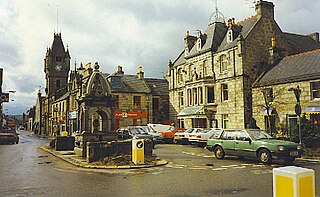
Huntly is a town in Aberdeenshire, Scotland, formerly known as Milton of Strathbogie or simply Strathbogie. It had a population of 4,460 in 2004 and is the site of Huntly Castle. Its neighbouring settlements include Keith and Rothiemay. Both Huntly and the surrounding district of Gordon are named for a town and family that originated in the Border country.

The Ikon Gallery is an English gallery of contemporary art, located in Brindleyplace, Birmingham. It is housed in the Grade II listed, neo-gothic former Oozells Street Board School, designed by John Henry Chamberlain in 1877.
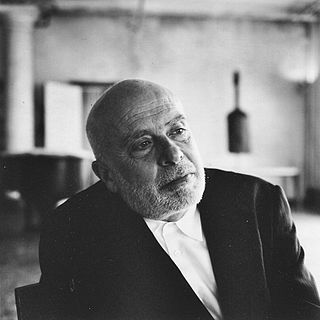
Francesco Clemente is an Italian contemporary artist. He has lived at various times in Italy, India and New York City. Some of his work is influenced by the traditional art and culture of India. He has worked in various artistic media including drawing, fresco, graphics, mosaic, oils and sculpture. He was among the principal figures in the Italian Transavanguardia movement of the 1980s, which was characterised by a rejection of Formalism and conceptual art and a return to figurative art and Symbolism.
Art intervention is an interaction with a previously existing artwork, audience, venue/space or situation. It is in the category of conceptual art and is commonly a form of performance art. It is associated with Letterist International, Situationist International, Viennese Actionists, the Dada movement and Neo-Dadaists. More latterly, intervention art has delivered Guerrilla art, street art plus the Stuckists have made extensive use of it to affect perceptions of artworks they oppose and as a protest against existing interventions.
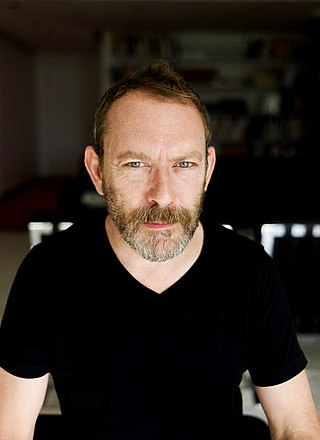
Liam Gillick is a British artist who lives and works in New York City. Gillick deploys multiple forms to make visible the aesthetics of the constructed world and examine the ideological control systems that have emerged along with globalization and neoliberalism. He utilizes materials that resemble everyday built environments, transforming them into minimalist abstractions that deliver commentaries on social constructs, while also exploring notions of modernism.

Ai Weiwei is a Chinese contemporary artist, documentarian, and activist. Ai grew up in the far northwest of China, where he lived under harsh conditions due to his father's exile. As an activist, he has been openly critical of the Chinese Government's stance on democracy and human rights. He investigated government corruption and cover-ups, in particular the Sichuan schools corruption scandal following the collapse of "tofu-dreg schools" in the 2008 Sichuan earthquake. In 2011, Ai Weiwei was arrested at Beijing Capital International Airport on 3 April, for "economic crimes". He was detained for 81 days without charge. Ai Weiwei emerged as a vital instigator in Chinese cultural development, an architect of Chinese modernism, and one of the nation's most vocal political commentators.
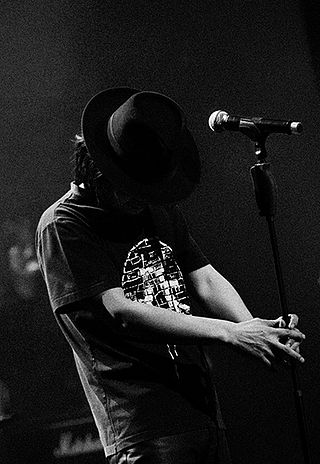
Zuoxiao Zuzhou, real name Wu Hongjin, (吴红巾), is a Chinese musician and artist.

The Free Ai Weiwei street art campaign was a series of protests during the PRC government's secret detention of Chinese artist Ai Weiwei for 81 days in 2011, organised by Hong Kong artists and art supporters. Various slogans calling for the immediate release of the artist such as "Free Ai Weiwei", and "Who's afraid of Ai Weiwei" accompany stencilled images of Ai were applied onto pavements, pedestrian overpass, and building walls all over Hong Kong, and similar posters and signs were displayed worldwide.

Gangnam for Freedom is a 2012 video clip produced by the British sculptor Anish Kapoor. It is a parody of the international K-pop hit single "Gangnam Style", and it was created to advocate the freedom of expression as well as to support the Chinese dissident Ai Weiwei, whose parody of "Gangnam Style" was blocked by Chinese authorities immediately after it was uploaded. The video features appearances by the staff of numerous contemporary art museums as well as human rights activists from Liberty, Index on Censorship, The Helen Bamber Foundation, and Amnesty International.
Deveron Projects, formerly Deveron Arts, is a United Kingdom arts organisation based in Huntly, Aberdeenshire, Scotland that hosts international artists from a variety of disciplines to collaborate with the town community. Deveron Projects follows a '50/50' approach, which gives equal attention to impact on the local community and impact on the international art scene. Residencies have been provided to artists from China, the Americas, India, Africa and mainland Europe as well as North East Scotland.
Michael Hue-Williams is a British art dealer and gallery director. He currently lives and works in London, and owns Albion Barn gallery in Oxfordshire.
Simone Kenyon is a performer, artist and producer born in Bradford, West Yorkshire. She works extensively with walking, and in collaboration with other artists and dancers. In 2006, with the dancer Tamara Ashley, she made 'The Pennine Way: The Legs that Make Us', a durational art project in the form of a walk, creating a performance lecture about the project for ROAM a weekend of walking at Loughborough University in 2008, and a book published by Brief Magnetics in 2007. With Andrew Brown and Katie Doubleday she instigated the 'Open City' project in 2006, exploring the organisation and control of behaviour in the public realm. Kenyon worked with Deveron Arts in Huntly, Aberdeenshire on the founding of their "Walking Institute" and completed a commission 'Hielan' Ways' - a long distance walk in the Cairngorms in 2013-14. She has also completed walking-based work Step by Step, 2013 for Dance4 in collaboration with Neil Callaghan. Kenyon is connected with the Walking Artists Network.
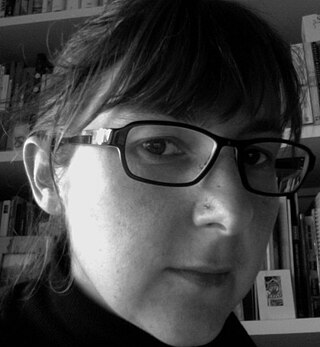
Clare Qualmann is a British multi-media performance artist based in London, UK. She is a senior lecturer in performing arts at the University of East London and also teaches at London Metropolitan University.
Slow Marathon is an annual event that takes place in the North East of Scotland with all routes ending in the Aberdeenshire town of Huntly. Originally conceived by Ethiopian artist Mihret Kebede during her art residency program between January and March in 2012 at the Deveron arts institute in Huntly, Scotland. The first successful event happened in March 2012 between Addis Ababa and Huntly. The idea of the Slow Marathon was to connect people in different worlds through art regardless of any paperwork and political discrimination that refrain people's mobility and integrity. The slow marathon participants walk at a pace that means they can take time to look at the landscape and consider a topic that is the focus of an associated discussion on the following day. The last person to finish the walk is deemed to be the winner.

Kui Hua Zi (Sunflower Seeds) is an art installation created by contemporary artist and political activist Ai Weiwei. It was first exhibited at the Tate Modern art gallery in London from 12 October 2010 to 2 May 2011. The work consisted of one hundred million individually hand-crafted porcelain sunflower seeds which filled the gallery's 1,000 square metre Turbine Hall to depth of ten centimetres.
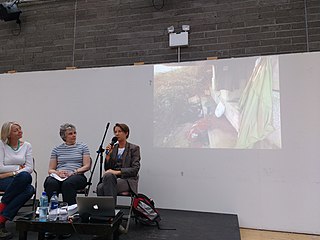
Monique Besten is a walking artist, writer, performer, historian and activist. She is known for her long-distance walking work, and is the subject of articles and publications discussing the use of walking as an art practice; she is a member of the Walking Artists Network. She has been cited by scholar Phil Smith as part of a new generation of artists engaging site-specific theatre through 'performative journeys'.
The Stars Art Group or simply "The Stars" was a Chinese avant-garde group of non-professional artists in the late 1970s and early 1980s. It was founded by Ma Desheng and Huang Rui and included Wang Keping (王克平), Qu Leilei, Ah Cheng, Ai Weiwei, and Li Shuang (artist) as the only female member. A historically significant exhibition, now called the Star Art Exhibition, took place in late 1979 in Beihai Park, Beijing, outside the China Art Gallery. After the exhibition was closed by officials, the group staged a protest for cultural openness. They succeeded in reopening the exhibition. The exhibition took place between 23 November and 2 December, in which around 200,000 people attended the event. The group organized another exhibition the next year. Around and after 1983, the group disbanded, partly due to their members going into exile under political pressure, especially the Anti-Spiritual Pollution Campaign of 1983.
Walking art refers to a variety of artistic practices that position walking as the central process, experience or outcome. Walking artists have diverse interests and it 'has gathered practitioners from nearly every field.:43 Despite emerging from a variety of artistic and literary traditions, a 'common feature [of walking art] is the engagement of the body in a process of walking through a landscape based on a specific artistic design.':161 Some artists consider walking an artistic end in itself, while others use walking as a means of mark-making, storytelling, social practice, or to create work in other artistic media.













